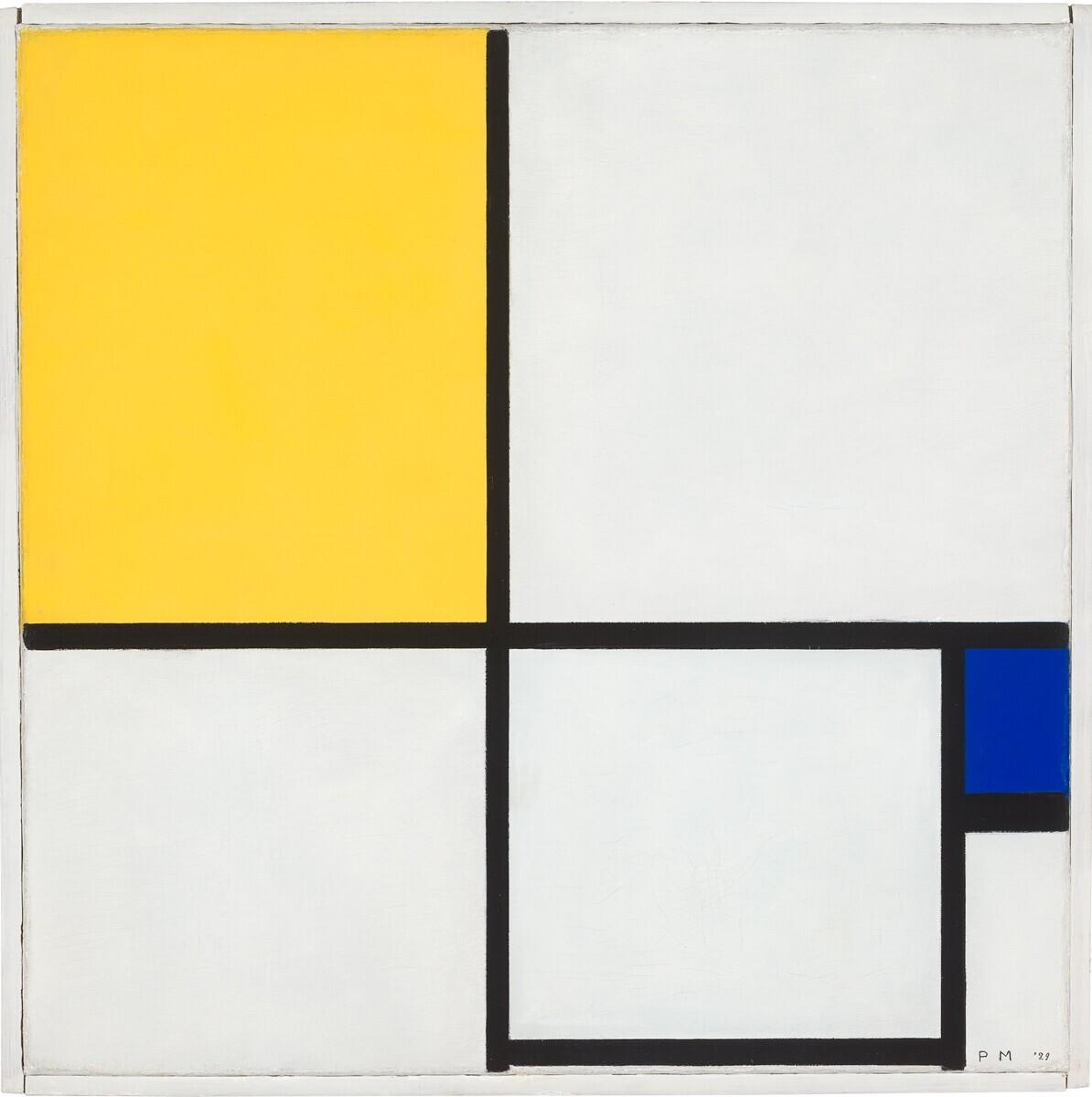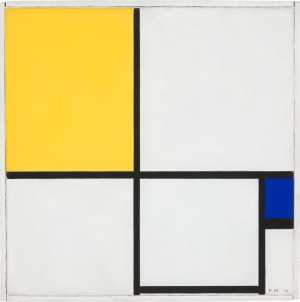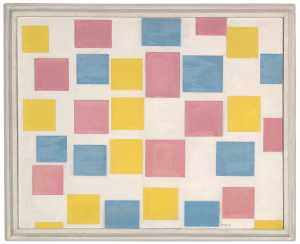Piet Mondriaan first painted mainly naturalistic landscapes. From 1907 his work changed under the influence of theosophical ideas. He developed the theory of 'neoplasticism', which described his development to an abstract art as reducing the visible world to straight horizontal and vertical lines and primary colours.
In 1917, Mondriaan and his friend Theo van Doesburg founded the magazine 'De Stijl' [The Style], which had enormous influence on the development of abstract art in the Netherlands. Mondriaan moved to Paris and London before finally settling in New York in the 1940s. His work became more colourful and more rhythmic and reflected his interest in jazz and modern dance.
Mondriaan's works and the countless texts on art did not only have a great influence on painting in the 1930s, but also on architecture, decorative and other applied arts.

Piet Mondriaan
Amersfoort 1872 - New York 1944





